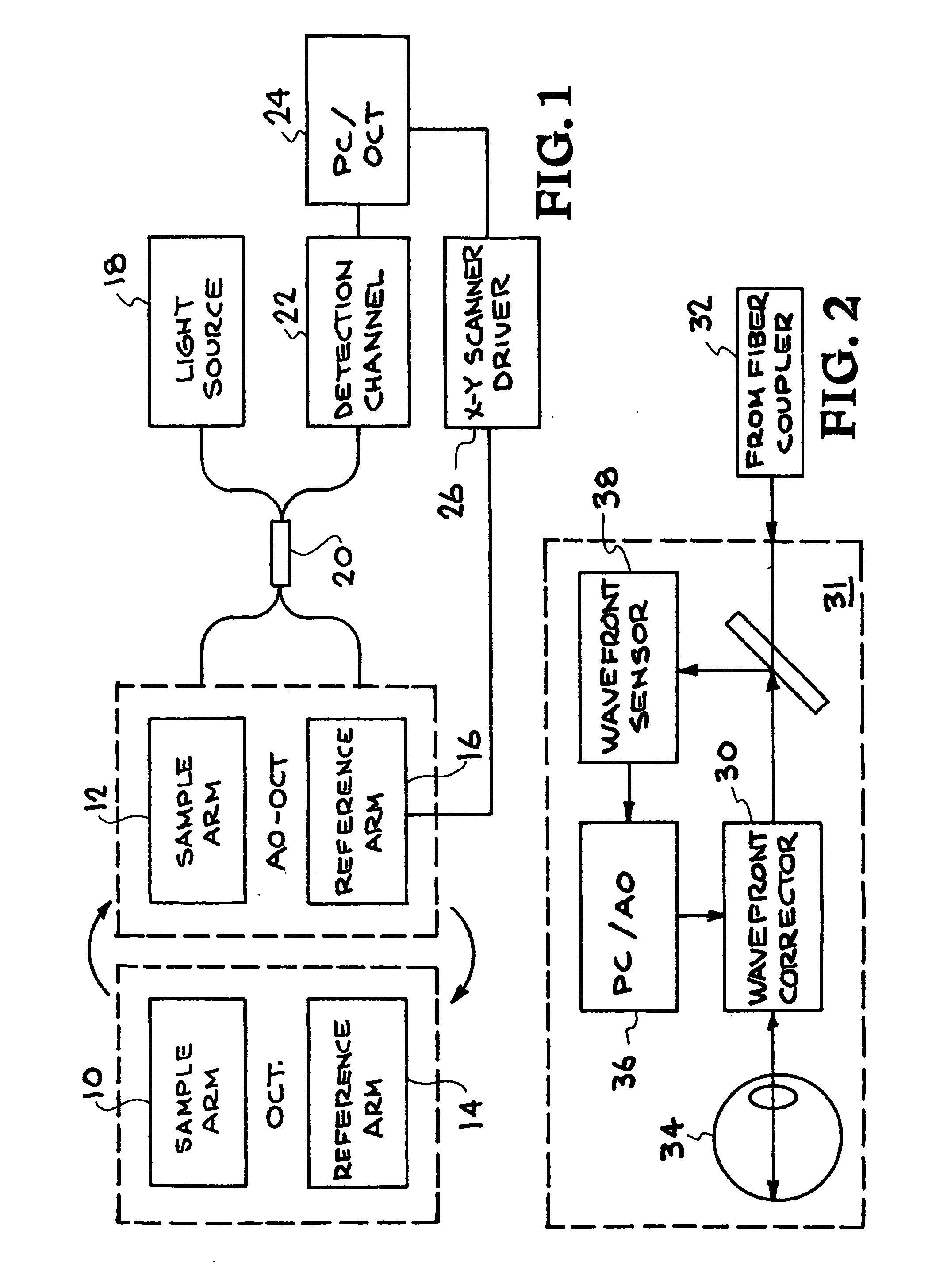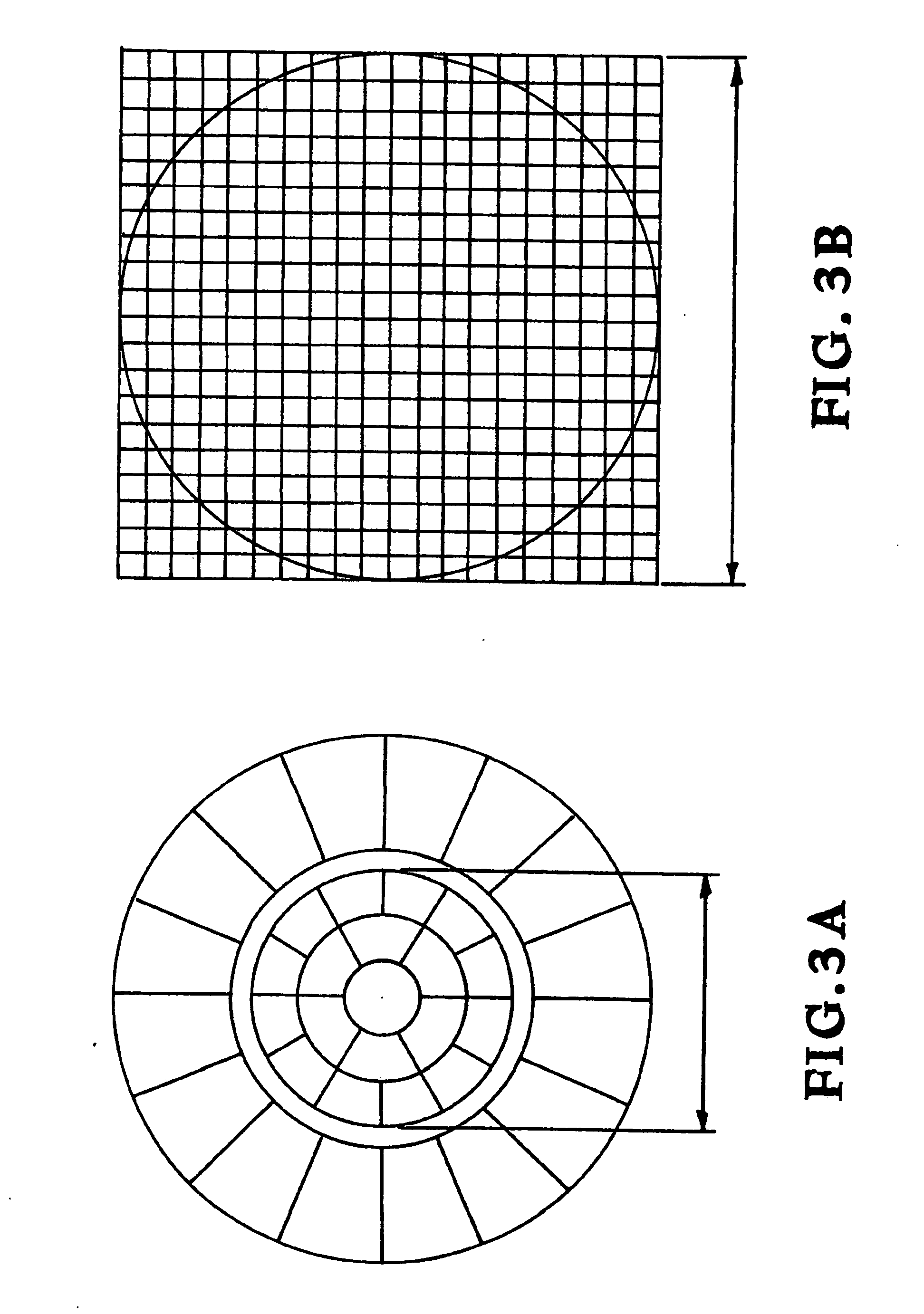High-resolution retinal imaging using adaptive optics and fourier-domain optical coherence tomography
a technology of adaptive optics and optical coherence tomography, applied in the field of retinal imaging, can solve the problems of poor resolution, reduced depth dependent sensitivity, and unsuitable morphological tissue imaging with medical ultrasonography, magnetic resonance imaging (mri) and confocal microscopy, so as to improve lateral resolution and precise positioning of the subject's eye. , the effect of minimizing head and eye motion
- Summary
- Abstract
- Description
- Claims
- Application Information
AI Technical Summary
Benefits of technology
Problems solved by technology
Method used
Image
Examples
Embodiment Construction
[0048] The Fourier-domain OCT system uses the spectral OCT approach in which a high-efficiency spectrometer measures the spectrum of the light that returns from reference and sample arms. FIG. 1 shows a schematic of the OCT engine according to a test where two sample arms, 10 and 12 and two reference arms 14 and 16 were constructed for AO-OCT and OCT imaging. A standard fiber-based OCT instrument is operated in Michelson interferometer configuration, where FC / APC fiber connectors are used to connect the fiber coupler's (80 / 20 splitting ratio) two outputs to fiber collimators placed at the input of bulk optics of the sample and reference arms. This feature of the OCT engine (light source 18, fiber coupler 20, detection channel 22) allows interchangeable operation for both AO-OCT and standard OCT imaging. Computer 24 controls X-Y Scanner driver 26 and collects and analyzes data from detection channel 22. Simple reconnection of FC / APC fiber connectors allowed rapid switching between th...
PUM
 Login to View More
Login to View More Abstract
Description
Claims
Application Information
 Login to View More
Login to View More - R&D
- Intellectual Property
- Life Sciences
- Materials
- Tech Scout
- Unparalleled Data Quality
- Higher Quality Content
- 60% Fewer Hallucinations
Browse by: Latest US Patents, China's latest patents, Technical Efficacy Thesaurus, Application Domain, Technology Topic, Popular Technical Reports.
© 2025 PatSnap. All rights reserved.Legal|Privacy policy|Modern Slavery Act Transparency Statement|Sitemap|About US| Contact US: help@patsnap.com



